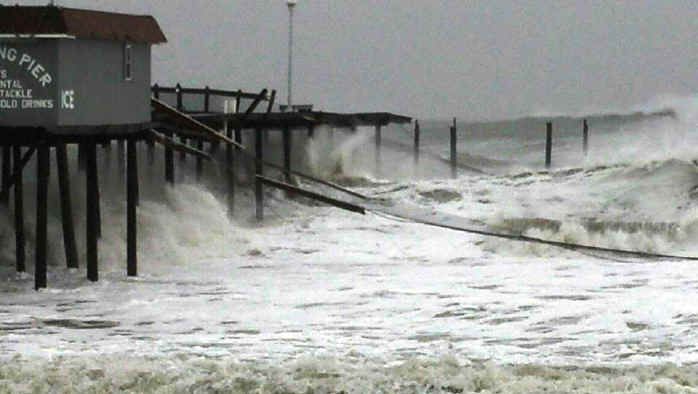Welcome to Handiham World.
 Back in the fold and confused as heck.
Back in the fold and confused as heck.
From time to time I talk with an amateur radio operator who has been
"away from the hobby" for a while - sometimes quite a few years. The
scenario is that this person has kept his (or her) license current but has
simply been busy with other things and has not only not been on the air, but has
not been paying any attention at all to radio-related publications or websites.
This sort of thing has been happening for the entire history of amateur radio.
When I was first licensed as a teenager, I was full of enthusiasm for radio and
electronics, so it was hard to understand how some of the other guys seemed to
be able to set ham radio aside for a period of time and simply not be active at
all. The explanations varied, but usually boiled down to being busy with work
and raising a family. Over the decades that I have been licensed, I have found
that my interests have changed and there is a natural ebb and flow in my
attention to amateur radio. Still, I have never actually taken any kind of
sabbatical from amateur radio in the sense that I put the equipment away and
didn't get on the air. Some people do that. Even when I didn't operate a lot, I
did stay in touch with my friends and kept up with the amateur radio news. I'm a
long time ARRL member and QST has always been a good source for news and
information about amateur radio and technology.
But what happens when you pack the equipment away and never read anything
about amateur radio for a significant period of time?
The answer is that you are in for quite a surprise. In fact, there may be
more than one surprise. For one thing, your treasured amateur radio equipment
that has been packed away in boxes for the past 15 years is now hopelessly out
of date. Vacuum tube equipment, if it was part of your ham shack decades ago, is
now passé unless you are an aficionado of such antique gear. If your equipment
was used and sort of old when you originally got it, it may not even cover all
of the modern bands. It might have analog frequency readout. Even if it is
solid-state, the battery that maintains the settings may have died long ago and
left the radio in a factory default mode. Even worse, equipment that has been
stored unused for long periods of time may not even work. Frequently the storage
conditions are less than optimal, especially if they allow for the intrusion of
moisture – even humidity – or are places that are allowed to get extremely
cold or extremely hot, such as attics or garages. Most often the storage place
is a basement, and if the basement is not well ventilated, humidity can be a
slow killer as it causes contacts to corrode. Equipment that contains large
electrolytic capacitors can be especially dodgy after long periods in storage
because the capacitors may deteriorate. All in all, equipment that is unused for
a long period of time is probably going to be a disappointment.
Another thing that I run into is people who, because they have not kept up
with the amateur radio news, simply don't know about changes in the rules and
regulations and the state of the art in amateur radio. Thus is it possible to
run into people who still don't know that the Morse code examination is no
longer a testing requirement and who have never heard of the 60 m band. It's a
pretty good bet that these are the folks who will have the old, dysfunctional
station that they think they are going to put back on the air. If my contact
with this person is a phone call, I know that I'm going to have to settle in for
quite a discussion as I bring them up to date on the last couple of decades in
amateur radio. Doing so can be tricky; how does one explain EchoLink when the
person has no idea that a personal computer is an essential component in the
modern ham shack? You have to be kind of careful and tactful with some of your
explanations because you have to remember where the other person is coming from.
In a sense, it is as if they have time traveled, 20 years into the future, and
when they look around they see technology that they never even imagined could
exist, much less understand and use in amateur radio. I always try to start with
the basics and help them assess their amateur radio goals so that I can make
suggestions as to how they might proceed to get back into the hobby. The idea is
to make getting back into amateur radio seem like a reasonable and reachable
goal, and that means that you will have to help them figure out what they want
to do. If they have kept up their amateur radio license all these years, they
have obviously valued amateur radio as a worthwhile activity. I always figured
that it is my job to help them be successful, and that can be as unique for
every person as there are people with amateur radio licenses. The secret is to
set them at ease so that they do not feel overwhelmed and hopelessly out of
date. A friendly discussion about how they enjoyed amateur radio in the past can
lead to clues about what their goals in amateur radio might be today. It never
hurts to suggest the local radio club as a helpful resource. Amateur radio
publications and organizations like ARRL have a fantastic array of services and
resources in print and on the web. Although I am willing to provide phone number
and website information for amateur radio vendors, I like to make sure that a
returnee to our amateur radio fold has a pretty good idea of what his or her
goals are before putting down some big bucks for a new station. On the other
hand, I am not going to be shy about helping the person understand the
limitations of decades-old equipment that they have had in storage.
If you have a chance to help someone who has been out of amateur radio for a
period of time, please be a good listener and help them to reach their amateur
radio goals. Won't it be wonderful when you are able to make a contact with them
on the air, and welcome them back?
Email me at
handiham@couragecenter.org with your questions & comments.
Patrick Tice, WA0TDA
Handiham Manager
Troubleshooting
101: SWR goes up when adding radials to vertical

You have installed a short HF trap vertical antenna, ground-mounted in the
back yard. By short, I mean that it is a typical multiband antenna that
uses a combination of reactances to be resonant on several HF bands without a
tuner. If you consider that a quarter-wave on the 40 meter band would be around
10 meters, or over 30 feet, and your antenna is shorter than that because of the
inductance in the traps, then you can expect the feedpoint impedance of the
antenna to be lower than that of a full-sized quarter-wave single band vertical
for that band.
With me so far?
Okay, so you connect the feedline, 50 ohm coax, and run some SWR tests.
The antenna tunes great, and the SWR is low - as close to 1:1 as you can get -
in spite of the fact that you have not even put down any radials. Tuning
around with the receiver, you hear a few stations on several bands, but nothing spectacular.
An attempt to make a contact on 20 meters fails because you just can't seem to
get through.
Time to finish the job by adding the ground radials that the manufacturer
recommends!
After the radials are in place, the bands really seem to have improved.
Stations are more numerous and louder, and it's time to check the SWR again
before trying to make some contacts.
Problem: The SWR has gone up! It's not 1:1 anymore, but it isn't 3:1
either, though it does get pretty high toward the band edges on 40 meters. In
fact, it's a bit too high - around 2:1 - where you like to hang out on 40, in
the General class phone band, but lower, around 1.5 to 1 in the CW band. How
should you solve this problem so that you can use the antenna in the phone band?
It is important to know what is going on here. You might assume that
the radials are cut to the wrong length and have detuned the system. It would be
a lot of work to pull them up and put in new ones. But the problem did show
after you installed the radials, right?
What you need to know: Loaded (trap) vertical antennas that are
physically shorter than a quarter-wave will typically have a rather low
feedpoint impedance, below the 50 ohm impedance we would like to see when we use
coaxial cable like RG-8X or RG-213. Over a perfect ground, this would result in
an SWR of over 1:1, sometimes quite a bit over. However, you installed your
vertical over the soil in your back yard, which is not a perfect ground. Ohmic
loss in the soil might add just enough to the too-low feedpoint impedance of
your vertical antenna to add up to a better match for the 50 ohm coax!
But there is more to a good antenna system than having a low SWR. A
dummy load has a low SWR and it is not an efficient antenna. Ground radials add
to the conductivity of the soil, cutting ohmic loss and making the antenna more
efficient. That is why the addition of the radials is recommended by the
manufacturer and why you found out that after they were installed you were able
to hear more stations. Unfortunately, adding the radials also had the
effect of raising the SWR by cutting those losses that were contributing to a
better match between feedline and antenna!
What to do: A less than perfect SWR is not a tragedy and the antenna
will work quite well as long as the transmitter will put out full or nearly full
power. In the case of the 40 meter tuning problem, you may need to tune the
antenna by taking it down and shortening the overall length by telescoping the
tubing at the top section, or following whatever tuning procedure is recommended
by the manufacturer. This brings the resonant point close to where you need it
to enjoy whatever part of the band you wish. The manufacturer may also recommend
a matching device at the feedpoint. You can also use your automatic
antenna tuner to flatten out the SWR so that the radio will put out full power
when you want to run RTTY or CW, assuming the antenna's SWR might now be higher
on the lower frequencies in the 40 meter band. Whatever you do, don't skip
the initial tuning process outdoors at the antenna, because an indoor automatic
antenna tuner cannot compensate for an antenna that is far out of resonance.
A good radial system is your vertical antenna's best friend, even though it
may raise the SWR a bit on some installations. Overall, the gain in
efficiency is well worth it!







